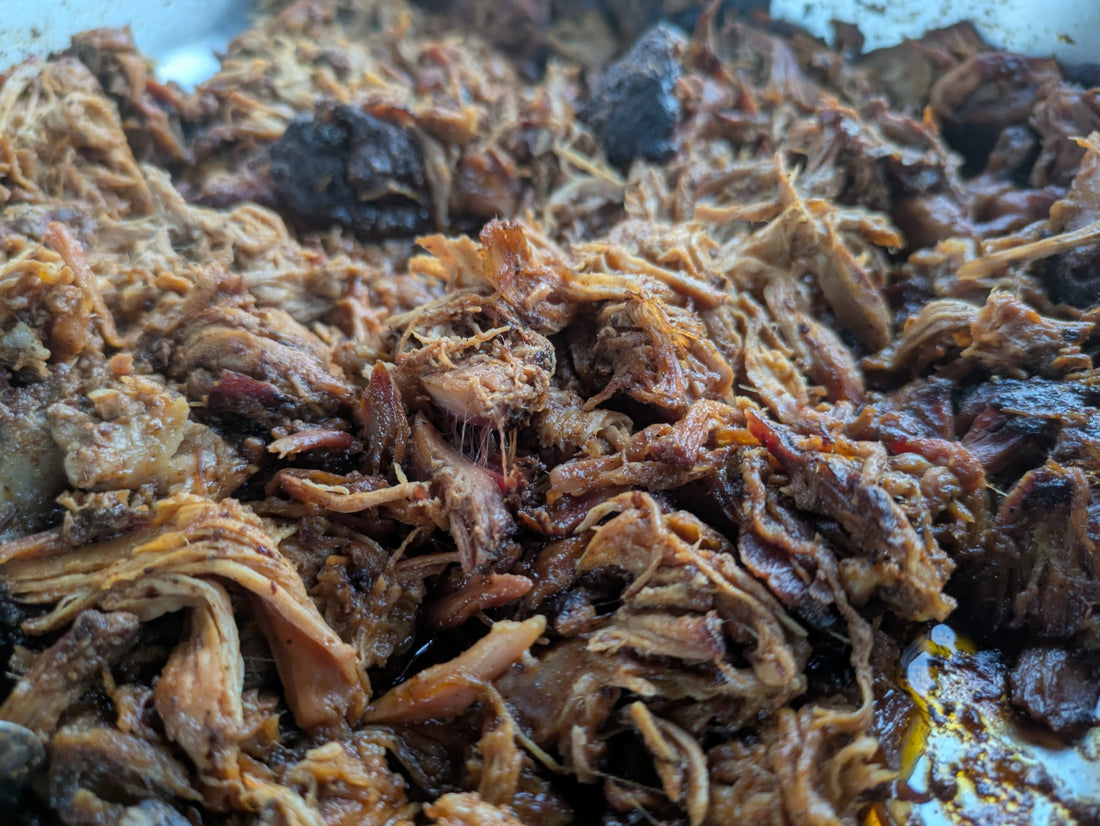
Why 135°C? The Perfect Temperature for Smoking BBQ
The Journey to the Ideal Smoking Temperature
If you’ve ever explored the world of barbecue, you’ll likely have noticed one temperature recommendation keeps appearing: 135°C (275°F). This isn’t a random figure. It’s the result of balancing complex chemical reactions, cooking safety, and flavour development. To understand why 135°C is often regarded as the perfect smoking temperature, let’s embark on a journey through the science and craft of BBQ smoking.
The Science of Collagen Hydrolysis and Moisture Retention
 At the heart of smoking tougher cuts like pork shoulder, brisket, or ribs is the transformation of collagen, the connective tissue in meat, into gelatin. This transformation occurs through a process called hydrolysis, where heat and moisture break down the collagen’s triple-helix structure into soluble gelatin. Hydrolysis begins at temperatures around 70–80°C but requires sustained heat over time to complete. Cooking too quickly or at excessively high temperatures causes muscle fibres to contract rapidly, forcing moisture out and resulting in dry, tough meat.
At the heart of smoking tougher cuts like pork shoulder, brisket, or ribs is the transformation of collagen, the connective tissue in meat, into gelatin. This transformation occurs through a process called hydrolysis, where heat and moisture break down the collagen’s triple-helix structure into soluble gelatin. Hydrolysis begins at temperatures around 70–80°C but requires sustained heat over time to complete. Cooking too quickly or at excessively high temperatures causes muscle fibres to contract rapidly, forcing moisture out and resulting in dry, tough meat.
Smoking at 135°C provides a controlled environment where collagen hydrolysis progresses steadily without overheating the muscle fibres. This balance allows gelatin to build up, giving the meat its tender, juicy texture. It’s like a slow dance rather than a sprint — giving the meat time to relax and become tender, rather than forcing it too quickly.
Flavour Chemistry: Smoke Deposition and the Maillard Reaction
Flavour development during smoking is more than just the smoky aroma; it’s a complex interplay of chemical reactions. At 135°C, smoke particles adhere effectively to the meat’s surface, allowing phenols and carbonyl compounds in the smoke to penetrate and infuse rich flavours. If the temperature is too high, smoke tends to become overly reactive and bitter, compromising flavour.
At the same time, the Maillard reaction unfolds on the meat’s surface. This reaction between amino acids and reducing sugars produces a browned, savoury crust known as bark. Because the Maillard reaction accelerates above 140°C, smoking at 135°C encourages gradual, controlled browning. This prevents charring while still producing the deep, savoury flavours and textures that define excellent BBQ.
Balancing Cooking Time and Food Safety
Cooking at 135°C also strikes an important balance in terms of time and food safety. Temperatures below approximately 110°C prolong cooking times significantly, increasing the risk that meat remains within the “danger zone” (5°C to 60°C) for bacterial growth. Conversely, temperatures above 150°C accelerate cooking but can cause excessive moisture loss and toughness.
At 135°C, you have a temperature that’s high enough to bring the meat safely through pasteurisation within reasonable timeframes but low enough to avoid drying it out. It’s a practical temperature that helps maintain consistent smoker heat, reducing the need for constant fire management.
Real-World Impact: Cooking Different Cuts at 135°C
Smoking ribs, pork shoulder, or brisket at 135°C typically results in outstanding textures and flavours. Ribs take about 4 to 6 hours to develop tender meat with well-formed bark. Pork shoulder requires 8 to 12 hours to fully hydrolyse collagen into gelatin, enabling it to pull apart easily. Brisket, the most challenging cut, can take 10 to 14 hours at this temperature, slowly breaking down connective tissue while maintaining moisture and flavour.
This temperature range provides predictable cooking times and consistent results, which are crucial when catering or planning events. It also allows room to experiment with different woods and rubs without risking a rushed or dried-out cook.
Tips for Mastering 135°C Smoking
Maintaining a steady 135°C requires reliable equipment and some practice. Accurate thermometers are essential because even small temperature fluctuations can affect collagen hydrolysis and moisture retention. Managing airflow and fuel carefully keeps the smoker environment stable.
Periodic spritzing with liquids such as apple cider vinegar or dilute marinades can help maintain surface moisture, encourage smoke absorption, and prevent bark from becoming too tough. These small details amplify the flavour complexity and tenderness.
Conclusion: The Science and Art Behind 135°C
Smoking at 135°C is not just tradition—it’s a scientifically grounded method that maximises collagen hydrolysis, optimises smoke flavour deposition, supports the Maillard reaction, and ensures safe, moist, tender meat. It represents the sweet spot where time, temperature, and chemistry align to create truly exceptional barbecue.
Next time you set your smoker, aim for 135°C and enjoy the slow transformation from raw cut to smoky perfection. Your patience and understanding of the process will shine through every delicious bite.
